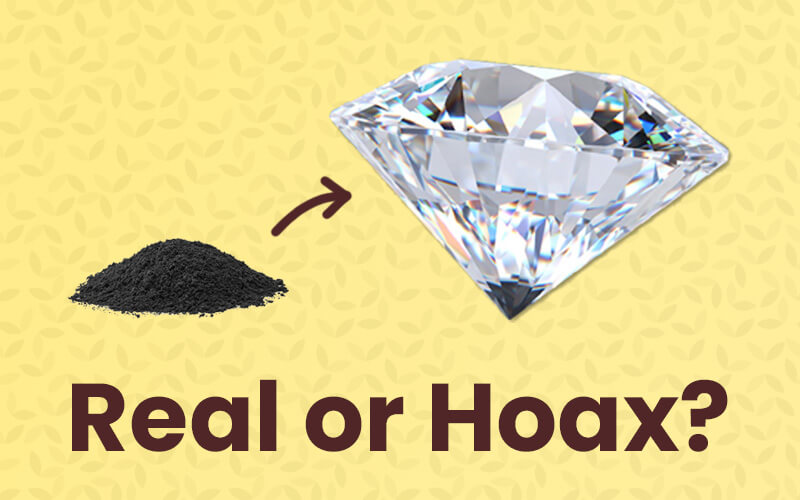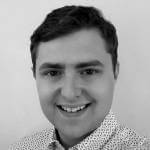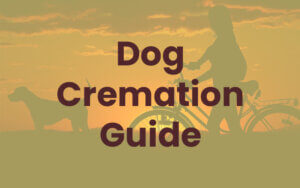Just days after Eterneva received a $600,000 investment from Mark Cuban on Shark Tank in 2019, critics came out of the woodwork (again) to claim that turning ashes into diamonds is a scam.
This isn’t new. Cremation diamond companies and their critics have existed since as far back as 2001. But it’s surprising the controversy over whether they are authentic, a hoax, or a scam, has lasted so long. Because the answer, backed by science, is clear:
Cremation diamonds are real diamonds made by applying intense pressure and temperature to carbon extracted from a deceased person’s ashes or hair. The claim that they are a hoax is false and based on faulty science. However, there are several untrustworthy companies in the industry.
I’ve looked into the companies, their claims, and the process. While the industry is not perfect, legitimate memorial diamond companies are genuinely turning ashes to diamonds.
Read on for the evidence.
In This Article
Are Cremation Diamonds Real Diamonds?
Before we get deeper into the “hoax” claims, I’ll quickly address a preliminary question: Are cremation, eternal, or memorial diamonds even real diamonds?
Cremation diamonds are real diamonds. They are a type of lab-made diamond that is chemically, physically, and visually identical to diamonds mined in nature. They are graded by diamond assessment labs in the exact same way as “natural” diamonds.
Furthermore, just like with other types of lab-made diamonds, the Federal Trade Commission has confirmed that cremation diamonds can be marketed as real and genuine diamonds because, just like “natural” diamonds, they are “pure carbon crystalized in the isometric system.”
To remove doubt, all reputable cremation diamond companies issue certificates of authenticity from organizations like the Gemological Institute of America with their diamonds.
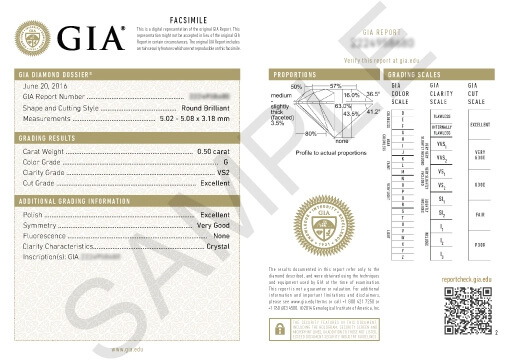
The fact that cremation diamonds are real is something that could not reasonably be faked, and it is not something that is in dispute.
So if this is not the point in dispute, where are the hoax claims coming from?
Why Do Some People Claim Memorial Diamonds Are a Hoax or a Scam?
It’s easy for me to cast aspersions on people who claim memorial diamonds are a hoax – and I have done so elsewhere on this website.
But I won’t do that here. I will stick to the facts.
The key source that people who believe cremation diamonds are fake cite is the Cremation Diamond Fraud Report 2020 by Robert James from Global Claim Associates.

He makes several claims in his report, which you are welcome, if not encouraged, to read. These are the same claims repeated elsewhere on the internet by those attempting to discredit the cremation diamond industry.
In summary, the report’s claims are:
- The cremation diamond industry operates with no government oversight,
- Cremated ashes contain no carbon,
- Carbon from outside sources is used to make cremation diamonds.
- Cremation diamonds cost too much for what they are,
- The promotional claims by cremation diamond companies are not verifiable.
I will debunk these claims one by one.
Does The Cremation Diamond Industry Operate With No Government Oversight?
No. Cremation diamond companies are subject to the same laws and government oversight as every other industry in the USA.
First, the Federal Trade Commission’s Bureau of Consumer Protection has the ability to investigate cremation diamond companies, sue them if they break the law, and develop regulations for the industry.
To date, despite their heavy regulation of the jewelry industry, the FTC hasn’t had to sue any cremation diamond brands.
Next, there is criminal law. Scams are a crime. Selling a false product is fraud. If cremation diamonds were a scam, the amount of risk people like Adelle Archer, the founder of Eterneva, would be putting themselves under is insane.
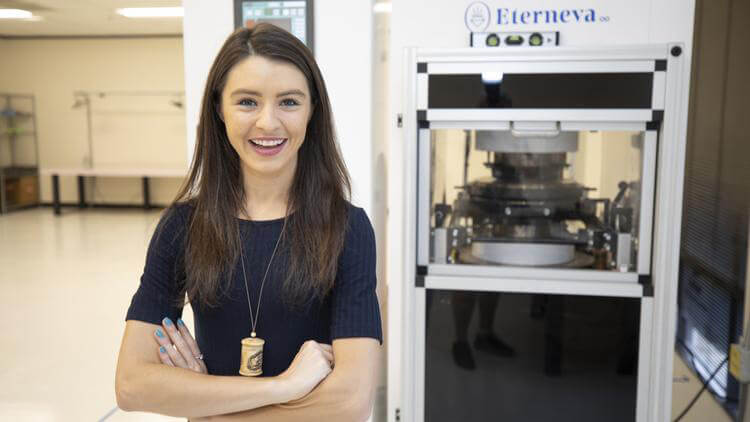
Finally, there is civil law and judicial oversight. Anyone who has bought a cremation diamond and believes it’s a fake could sue the company that made it for misrepresentation. If they are fake, you could team up with a lawyer, make it a class action lawsuit, and become a millionaire overnight.
Of course, this hasn’t happened.
Do Cremated Ashes Contain Carbon?
The report’s second claim is that cremated ashes don’t contain the carbon required to grow diamonds.
The logic set out is as follows:
- “Diamonds are pure, crystallized carbon.”
- “Carbon is a main ingredient in the human body, making up approximately 18% of the total weight of the human body.”
- “Carbon burns at 1405 degrees F.”
- “Cremation furnaces operate in a temperature range of 1600F to 1800F.”
- “The cremation process destroys all traces of carbon-based matter and leaves no residual carbon with which to create a diamond.”
Statements 1 – 4 are actually all true. The flaw comes in making the leap to statement 5, because the cremation process does not destroy all traces of carbon.
Just because a cremation chamber reaches temperatures of 1,800°F does not mean that all matter in a cremation chamber also reaches temperatures of 1,800°F.

Around 1 – 4% of carbon in the human body survives cremation, as demonstrated by a 2011 study published in Forensic Science International, which found residual carbon in the form of calcium carbonates from bones in ashes resulting from temperatures above 1,800°F.
After cremation, most of what is left over is carbon-containing bones. These are then pulverized into what most people recognize as cremation ashes.
As explained by Jonathan Jarry, MSc for the non-profit McGill Office for Science and Society, it is “undeniable” that carbon survives cremation.
From there, all it takes is to extract that carbon into graphite, which there are many ways of doing – this point is not disputed.
Then you have the material you need to create a diamond the same way as any other lab grown diamond.
Is Carbon From Outside Sources Also Used?
Now we’ve established that turning diamonds to ashes is scientifically possible, we turn to another claim made against cremation diamond companies.
This claim is that the companies don’t just use the carbon from cremated remains in growing their diamonds but also use other sources of carbon to supplement it.
In some cases, this is true – but it’s not something cremation diamond brands try to hide, and it’s not something that makes them a scam. They are very transparent about it.
For example, after the carbon extraction process, if Algordanza does not obtain enough carbon to create a diamond of the desired size, they offer a “two source” solution. This allows customers to provide supplementary sources of carbon (such as meaningful possessions of the deceased loved one) as part of the diamond-making process.
Usually, this is avoided by using enough ashes in the first place.
Regardless, this is not something that diamond companies try to hide, and a person’s deceased loved one’s ashes are fundamentally used to create the diamond.
Are Cremation Diamonds Overpriced?
The next “scam” accusation is that cremation diamonds are expensive.
Honestly, there is no way around it. Yes, they are expensive.
However, something being expensive does not a scam make.
If it did, we could call the entire funeral industry a scam. Caskets at funeral homes are marked up by around 30%!
The reality is that most lab diamonds are cheap because they are made overseas using the chemical vapor deposition (CVD) process. According to the Gemological Institute of America, this is an affordable way to make lab diamonds in bulk.

Cremation diamonds cannot be made in bulk. Each diamond needs to be made individually using the graphite made in the carbon extraction process. This is done using a high-pressure, high-temperature (HPHT) machine and is much more expensive.
Not only is the HPHT process expensive, but there are many other costs associated with creating cremation diamonds that don’t apply to typical lab grown diamonds. Alongside not being able to make their diamonds in bulk, the companies:
- Take on the significant risk involved with handling something so important to people, and implementing the processes to keep cremains safe, tracked, and secure;
- Provide a personal service with high levels of transparency to ensure customers know they are in safe hands, including providing phone calls, videos, and photos through the diamond growing process;
- Incur the costs involved with extracting carbon from a deceased’s person’s ashes, which is an involved laboratory process;
- Employ well-paid staff in America to carry out all of the above rather than pay cents a day to people overseas.
Of course, if a competitor wants to enter the market and do it all cheaper, they can. That is one of the benefits of the free market in America.
I do hope the prices come down in the future, but they are where they are today due to the power of supply and demand, not because cremation diamonds are a hoax.
Are The Promotional Claims by Cremation Diamond Companies unverifiable?
The final claim made by people who claim cremation diamonds are a scam is that even if ashes do contain carbon (they do), and even if that carbon could be turned to diamonds (it can), you shouldn’t believe the companies that claim to do it regardless.
Of course, the same logic applies to cremation itself: When you give a body to a crematorium, how do you know the ashes you get back are from your lost loved one?
Regardless, compared to the previous claims, this one has a smidgen of merit.
There are some dodgy companies out there that I would avoid.
While it would be technically possible to verify that cremated remains were actually used to create a particular diamond (using something like Carbon-13), this is something only some people will do.
So there is a certain level of trust involved in the process, and you do have to be careful.
However, there are companies out there with years of a perfect reputation. These include Eterneva, Algordanza, and LifeGem.
All these companies have publicly facing founders putting their personal reputations on the line for their companies. If they were caught faking it, they would spend decades in prison. Furthermore, they all provide certificates of authenticity from independent third parties with their diamonds.
And when we’ve already proved that it is scientifically possible, and we already see the prices being charged, how would faking making diamonds from ashes be worth it?
Addressing Specific Accusations Made Against LifeGem Cremation Diamonds
As an aside, the Diamond Fraud Report 2020 singles out LifeGem specifically and makes a few claims about their trustworthiness.
It’s unnecessary to go too in-depth into the accusations made because I don’t want to be seen as a shill for LifeGem (with whom I have zero affiliation), but I will touch on them broadly.
Claim: Back in 2007, LifeGem used some stock photos on their website which were misleading to customers.
Fact: Most companies use stock photos on their websites. Go to the website of any law firm in America, and you will see what I mean. Further, there is no evidence that the photos are stock photos – they may well have been provided by the lab that processed the diamonds for LifeGem back in 2007 when they were starting up.
Claim: The HPHT machines that LifeGem claims to use to make their diamonds are hydraulic presses that can’t be used to make diamonds.
Fact: Hydraulic pressure can be used to create diamonds.
What You Would Have to Believe to Accept that Cremation Diamonds are a Hoax
Cremation diamonds from reputable companies with good reputations, like Eterneva, Algordanza, and LifeGem, are real diamonds made from human ashes.
To accept otherwise, you would have to believe:
- Lab-made diamonds are not real diamonds (refuted by the FTC), and
- The FTC, which has taken never taken any enforcement action against any cremation diamond company, has fallen for the hoax, and
- Thousands of customers over the past 20 years have fallen for the hoax, and
- The Washington Post has fallen for the hoax, and
- The tens of thousands of editors on Wikipedia have fallen for the hoax,
- The Gemological Institute of America has fallen for the hoax, and
- The Smithsonian Institute has fallen for the hoax, and
- The New York Times has fallen for the hoax, and either
- Cremated ashes don’t contain carbon, contrary to scientific evidence, or
- People like Adelle Archer, the founder of Eterneva, are risking decades in prison and losing their entire wealth to pretend to do something that they have the machines to do for real anyway.
Bottom line: Cremation Diamonds are not a Hoax.
Got anything to add? Leave a comment below.

